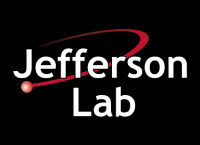Expertise
Jefferson Lab’s present range of SRF expertise resides in three closely collaborating departments in the Accelerator Division:
- The Institute for SRF Science and Technology (which is called simply SRF Institute in these Web pages, and which is under consideration for expansion as a U.S. Department of Energy SRF technology center),
- The Center for Advanced Studies of Accelerators, which conducts a broad program of theoretical and experimental research in accelerator and beam physics, and
- The Engineering Department is home to the majority of mechanical, RF, and electrical engineers and designers, important contributors to JLab's SRF systems.
With this expertise Jefferson Lab already has a considerable capability for design, development, and prototyping of new SRF systems for the wider science and technology community. This was demonstrated when the laboratory designed and developed cavities, cryomodules, and the refrigeration system for the Spallation Neutron Source (SNS, at Oak Ridge National Laboratory in Tennessee) on a very tight schedule. Jefferson Lab is also actively involved with Michigan State University’s National Superconducting Cyclotron Laboratory and with Argonne National Laboratory in the development and testing of cavities and control systems for the envisioned Rare-Isotope Accelerator (RIA), and is collaborating with Cornell University and with Daresbury Laboratory in England in the design and construction of their SRF-driven light sources.
Staff
A staff of more than 50 FTEs is dedicated to SRF activities at Jefferson Lab, including several Ph.D.-level scientists, numerous professional engineers, some graduate students and post-doctoral scientists, in-house technologists, and regular visitors. The technical infrastructure is complex enough to require about 10 FTEs within these numbers for operations and maintenance.
Facilities
Jefferson Lab’s production and developmental capabilities in SRF reside mostly in the test lab of the SRF Institute—a high-bay, fieldhouse-sized building modified incrementally since being inherited from NASA in the mid-1980s, during Jefferson Lab’s earliest years. These capabilities include:
- Cavity fabrication and electron beam welding capabilities.
- Clean room with integrated chemistry and high-pressure rinsing system.
- An electropolishing facility capable of handling multicell structures to as low as ~750 MHz.
- A dedicated helium refrigerator capable of 300 W at 2 K.
- A vertical test facility containing eight dewars of various sizes, with a dedicated control room for the testing of cavities over a broad range of sizes, geometries, and frequencies.
- A large magnetically shielded (<10 mG) cryomodule test cave with a dedicated control room and RF power sources.
- An extensive surface science and analytical laboratory (including scanning Auger microscope, scanning field emission microscope, transmission electron microscope, and secondary ion mass spectrometer).
- Several high-vacuum, high-temperature (to 1250 ºC) furnaces.
- Modest RF structure testing facilities—tuning, field mapping.
- Material and metallurgical testing facilities (including microscopes and low-temperature materials properties measurements).
- RF laboratory for the development of SRF cavity control systems.
- Experimental niobium thin film deposition system.
It is also important to note that both the CEBAF SRF accelerator and the laboratory’s SRF-driven free-electron laser (FEL) are test beds for the extension of SRF technology to new directions that may enable new applications. For example, high-power energy recovery was demonstrated in the FEL’s SRF driver accelerator and is used in its routine operation as a facility for science and technology users. A 2003 energy-recovery experiment on CEBAF demonstrated that energy recovery could be applied to high input-to-output energy ratios with little beam degradation. As a result, ERLs—energy-recovering linear accelerators, or linacs—are now integral parts of many of the light sources that are being considered and even proposed worldwide, including the Cornell and Daresbury efforts mentioned above. The Jefferson Lab SRF accelerators are directly suitable for testing these and related new concepts, particularly with RF structures for b =1 particles (that is, for speed-of-light particles) and frequencies that are harmonic with 1500 MHz.
Experience
Efforts that Jefferson Lab’s SRF capabilities have been or are being used for include:
- Design, construction, testing, and operating experience for the 47 operational cryomodules (containing 358 cavities) in CEBAF and in the energy-recovering linear accelerator that drives the Jefferson Lab free-electron laser.
(CW, E pk = 14–30 MV/m)
- Design, prototyping, assembly, and testing of Spallation Neutron Source cavities and cryomodules (23).
(Pulsed, E pk = 25–35 MV/m)
- Currently completing a second-generation prototype cryomodule for CEBAF’s 12 GeV upgrade.
(CW, E pk = 40–55 MV/m, high Q 0 )
- Numerous collaborative R&D cavity tests.
(CW, E pk £ 80 MV/m, variety of frequencies and shapes, fabrication and processing techniques)


